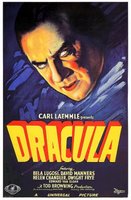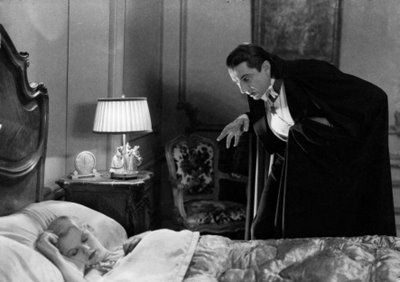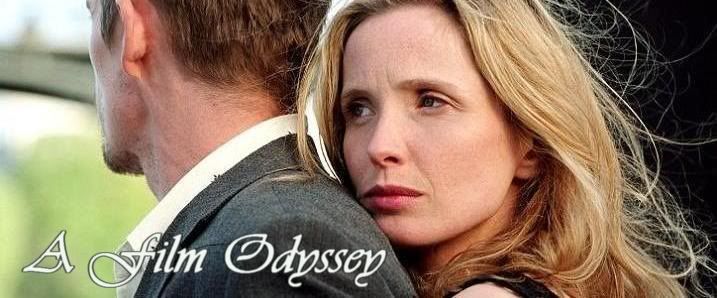Dracula (1931)
 Consider Pulp Fiction’s comatose Uma Thurman without the aid of John Travolta’s breastplate-piercing adrenaline shot, and you have a pretty good idea of how Tod Browning’s Dracula functions – or fails to do so. Maybe it’s just me, but while this typically canonized film isn’t outright terrible, save for cultural impact, it’s hard to not wonder what all the fuss is about. Admittedly, it would appear that all the elements are in place to create the eerie, stylistically restrained work it is so regularly touted as; grand sets, unembellished camerawork, and intentionally stylized performances. In separate contexts, those descriptors could be used for either great praise or great derision (such skimpy investigation being a common weakness in film criticism), so there must be more at work here keeping the parts from assimilating properly into the whole.
Consider Pulp Fiction’s comatose Uma Thurman without the aid of John Travolta’s breastplate-piercing adrenaline shot, and you have a pretty good idea of how Tod Browning’s Dracula functions – or fails to do so. Maybe it’s just me, but while this typically canonized film isn’t outright terrible, save for cultural impact, it’s hard to not wonder what all the fuss is about. Admittedly, it would appear that all the elements are in place to create the eerie, stylistically restrained work it is so regularly touted as; grand sets, unembellished camerawork, and intentionally stylized performances. In separate contexts, those descriptors could be used for either great praise or great derision (such skimpy investigation being a common weakness in film criticism), so there must be more at work here keeping the parts from assimilating properly into the whole.It’s appropriate, then, that majority of the film’s problems are relative, but there’s also an aching lack of subtext that further reveals the limitations apparent on the surface. That may be because this Dracula is only partially adapted from Bram Stoker’s novel, instead taken from the stage play written by Hamilton Deane and John L. Balderston – if this film is any indication, a tiresome, creaky affair that substitutes the rich lore of the vampire with droll human melodrama. In many ways, the various technical limitations can be easily read as a reflection of the Great Depression, the overall production stunted due to Universal’s lack of funding. Nonetheless, while some may appreciate the nuances of Dracula as an addition to its worth, I am unable to see them as anything but a hindrance to its potential, even as a period piece. The overall quality of even the cinematic basics – from framing to composition to editing – is so scattershot as to suggest that the few instances where everything comes together as an effective whole is but a happy accident.
The best of the Universal horror films (and generally all monster-based films of the sort) probed into the humanity of their subjects. Dracula deals with these notions only in broad motions that seem more obligatory to the script (insert memorable line of dialogue here!) than they do attempts to add some real meat to the proceedings. Whereas Max Schreck’s Count Orlock was not unlike a plague-carrying rat himself, his slow walk and wide eyes communicating a humanity eroded down to the bone, Bela Lugosi’s Dracula largely fails to register. (I’m bound to get hate mail for this, but hear me out). Granted, his nearly defining role is both memorable and entrancing (one only needs to look to how much the performance has permeated throughout culture), captivating with an understated, carnal sexuality and supreme macho posturing. Ultimately, though, the sad truth is that Lugosi so far outranks those around him, in front of and behind the camera, that his own potency is diminished as a result.
An interesting note of comparison exists in the form of the Spanish version of the film produced at the same time; using the same sets and script (the Spanish crew shooting at night while the Americans shot during the day), the overall result being much superior, if not as a psychological probe into the existential crisis of the vampire, then at least as an entertaining monster flick. In many ways, despite the line deliveries that should have been overdubbed and the scenes that deserved a second take, the lacking energy is simply the result of poor (or even nonexistent) direction (strange for Browning, whose Freaks is among the finest films of the decade; no surprise, then, that rumors suggest he didn’t actually direct a good bulk of the finished product). Nothing would thrill me more than for a film archivist to uncover an original cut of this film, revealing the current version to be but an alternate cut pieced together from sub-par footage.





Feature: Horror Marathon 2006

